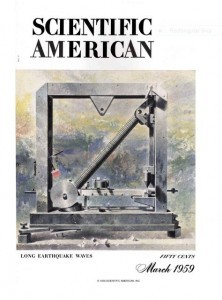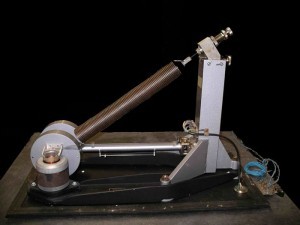Press-Ewing Seismograph on Jeopardy!
An important piece of earthquake-science history popped up a few weeks ago on Jeopardy!: “The Press-Ewing was an early seismograph, recording waves from these events. If you didn’t know a Press-Ewing from a French press, you were in luck. For $200, all you needed to know to formulate the question is what a seismograph measures. What is an Earthquake?


The Press-Ewing’s unique glass sphere was designed to eliminate the influence of atmospheric pressure but it was dropped from its successor, the Sprengnether, because it did not work particularly well, said Wielandt. By 1953, the instrument was recording earthquakes from stations in Bermuda, Pennsylvania and Western Australia, Press wrote in the American Geophysical Union journal Transactions in 1958, “A Long-Period Seismograph System.”
By the 1960s, earthquake data coming from the Press-Ewing would help prove the theory of plate tectonics, that slow-moving plates at earth’s surface generated earthquakes in the process of building mountains, ocean basins and continents. Frank Press, now 87, went on to become a leading earth science researcher, science adviser to President Carter and author of the popular intro-geology text, Understanding Earth.
“Before the Press-Ewing, seismographs were not standardized and more difficult to run,” said John Armbruster, a seismologist at Lamont-Doherty. “As a standardized network grew up, you could see the earthquakes lining up in clear patterns. Any school kid could look at a map of the world’s earthquakes and see the plate boundaries.”
Special thanks to Lamont librarian Amanda Bielskas
Further reading:
Historical Seismometers #3: Press-Ewing
A 1983 interview with Frank Press, California Institute of Technology archives
